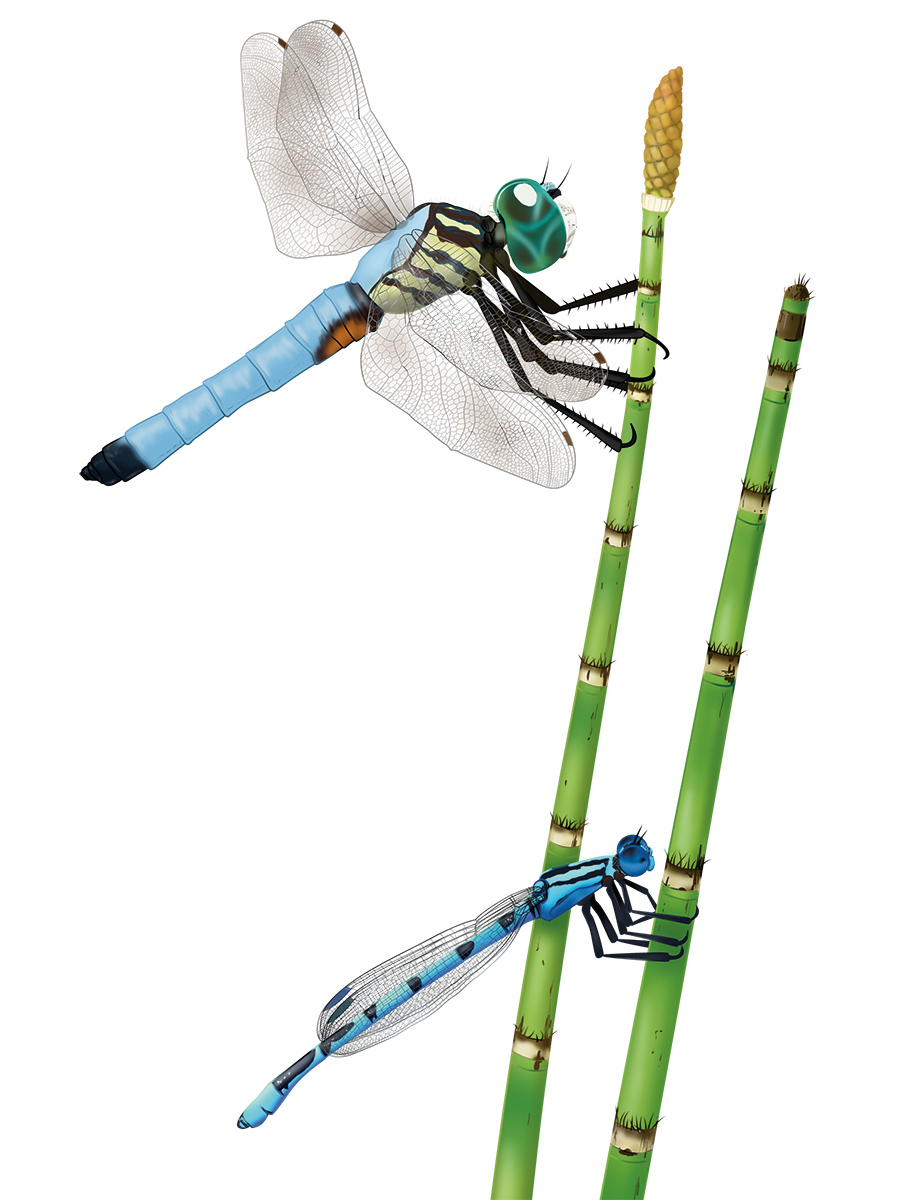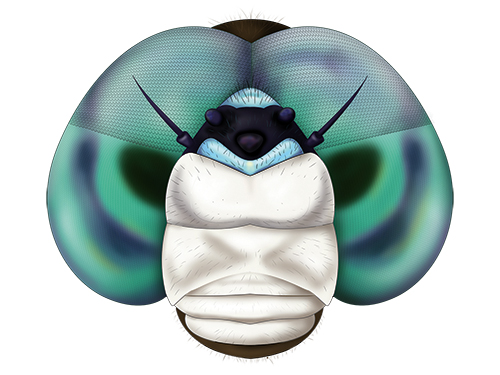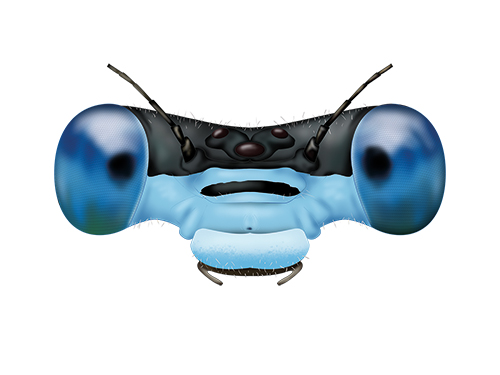Dragons and Damsels
Dragonflies and damselflies add fluttering beauty to gardens with large, lacy wings and bold colors. They’re also known to eat less desirable insects such as aphids and mosquitoes. Not sure how to tell these fancy fliers apart? Here’s a crash course featuring two common species of the order Odonata.
ILLUSTRATIONS Samantha N. Peters

FROM TOP Blue Dasher (Pachydiplax longipennis) and Familiar Bluet (Enallagma civile) on horsetail (Equisetum hyemale)

Blue Dasher (Pachydiplax longipennis) head, frontal view
Dragonflies
- Close-set Eyes The compound eyes of dragonflies (which
can contain up to 30,000 “ommatidia,” or visual units, each) are so close set they almost appear to touch — in fact, they sometimes do! - Open Wings Dragonflies leave their big, net-like wings open when resting. It’s a telltale sign of a dragon in your midst.
- Bigger Larger in girth and longer overall (with average lengths up to 4 inches), dragonflies are typically stronger, more confident fliers than damselflies. Brawn and beauty!

Familiar Bluet (Enallagma civile) head, frontal view
Damselflies
- Wide-set Eyes Damselfly eyes — also compound and crazy-cool — are so wide set they’re positioned more like human ears, giving damselfly heads the shape of tiny barbells.
- Closed Wings Damsels rest with their wings folded (the exception to the rule are those in the family Lestidae, commonly — and fittingly — known as spreadwings).
- Daintier Damsels in flight tend to look delicate and fluttery, hence the nickname “bog dancers.” They are usually smaller than dragonflies with slimmer abdomens and typical lengths ranging from 3/4 to 1 3/4 inches.

